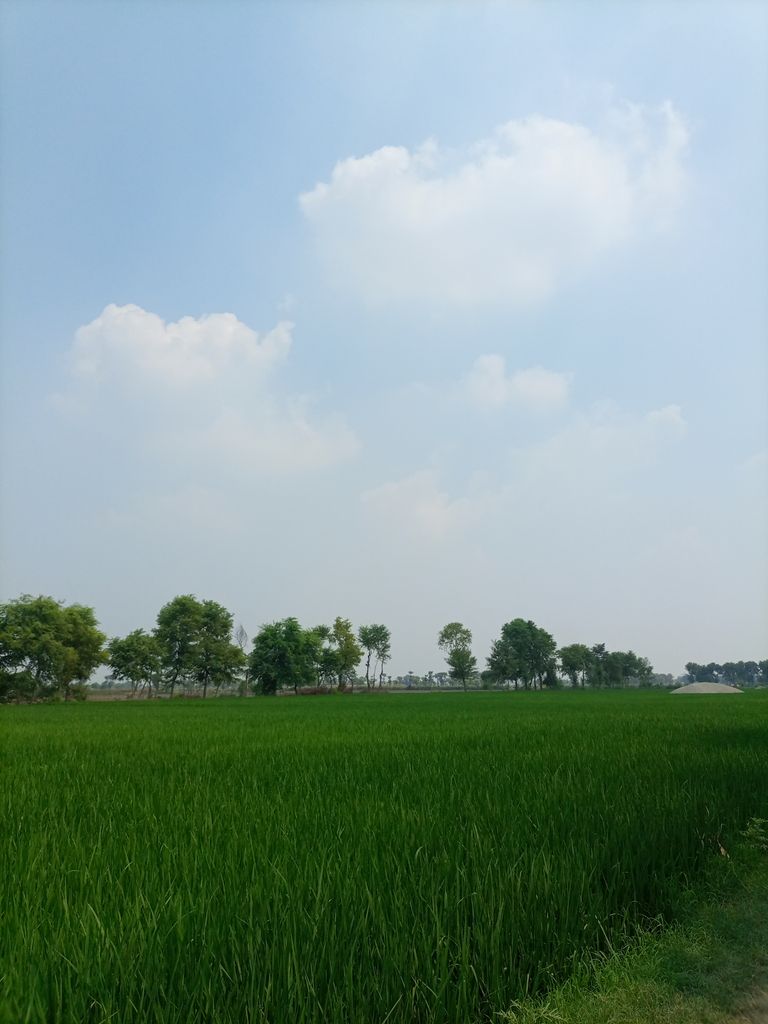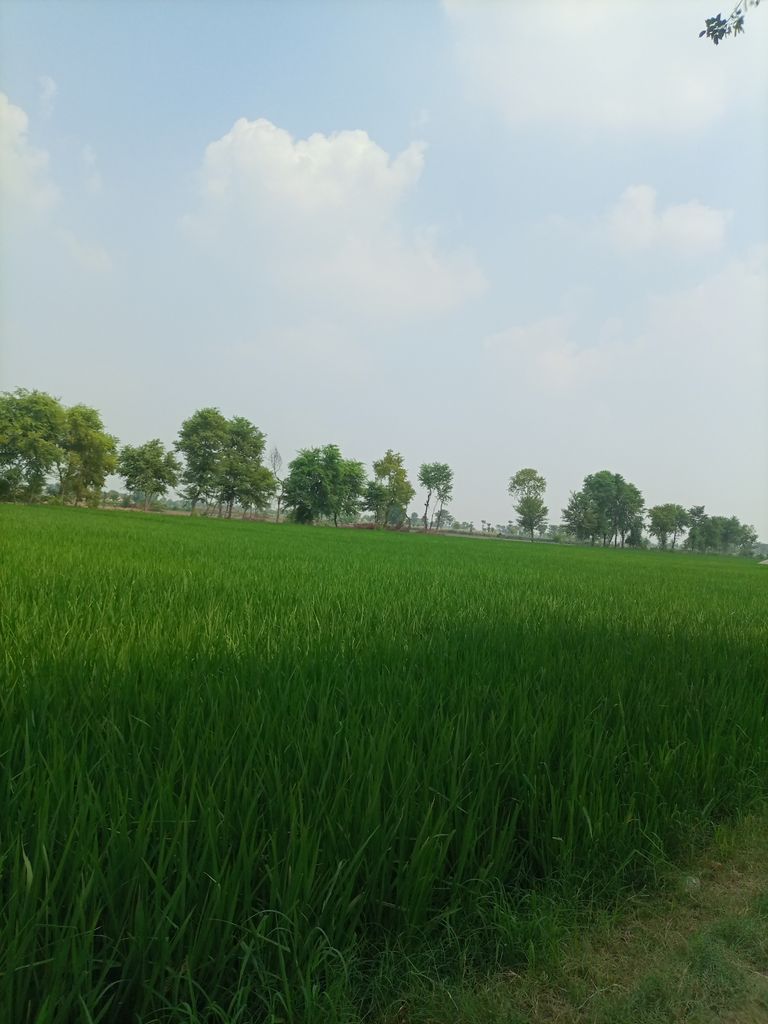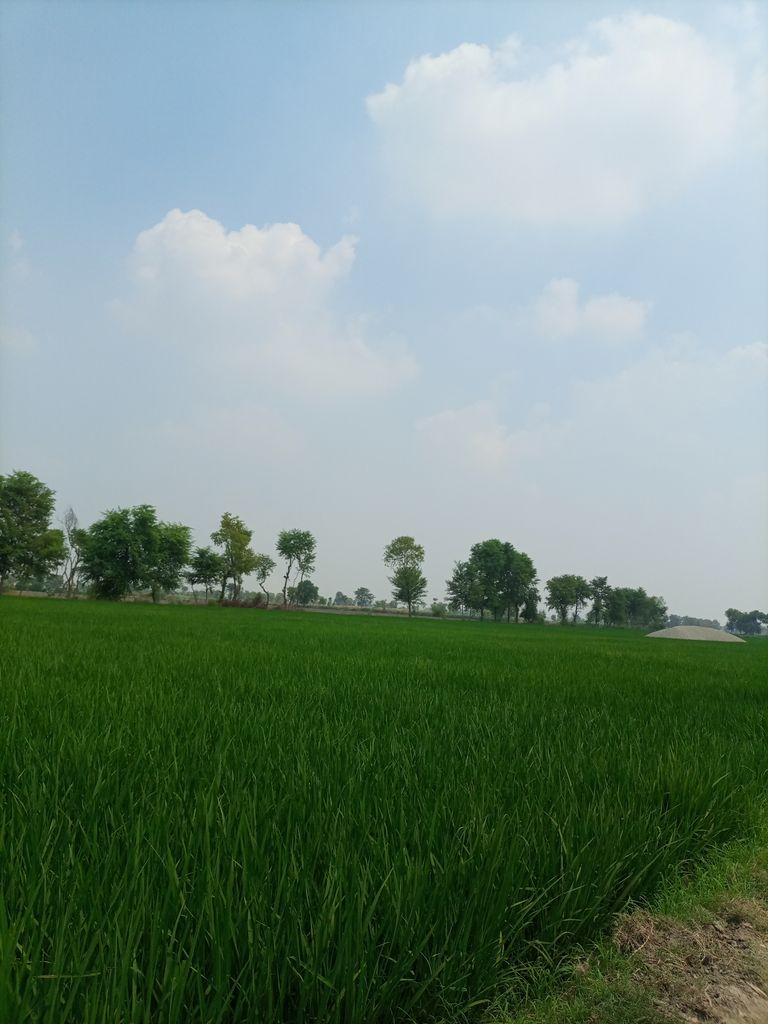Visit beautiful green rice fields in Pakistan looking very beautiful



Exploring the Serene Green Rice Fields of Pakistan
Pakistan, a country rich in cultural heritage and natural beauty, offers a multitude of picturesque landscapes. Among these, the lush green rice fields stand out as a symbol of rural tranquility and agricultural prosperity. These fields, predominantly found in the provinces of Punjab and Sindh, provide not only a visual treat but also an insight into the country’s agricultural backbone.
The Heartland of Rice Cultivation
Punjab Province
Punjab, known as the breadbasket of Pakistan, is home to extensive rice fields that stretch as far as the eye can see. The districts of Sheikhupura, Gujranwala, and Hafizabad are particularly renowned for their rice production. The fertile plains, nourished by the waters of the Indus River, create an ideal environment for rice cultivation. The sight of emerald-green paddies swaying gently in the breeze against the backdrop of a setting sun is nothing short of mesmerizing.
Sindh Province
Sindh, particularly the areas surrounding the lower Indus River, also boasts vast expanses of rice fields. Districts like Larkana, Jacobabad, and Shikarpur are notable for their rice output. The province’s warm climate and the availability of irrigation make it suitable for growing both Basmati and non Basmati rice varieties. Traveling through these fields, one can observe the traditional farming practices that have been passed down through generations.
The Beauty of the Rice Fields
The beauty of Pakistan’s rice fields lies in their simplicity and the rhythmic pattern of rural life. During the planting season, these fields are flooded with water, creating a mirror-like surface that reflects the sky. As the rice grows, the fields transform into a sea of green, presenting a vibrant and soothing landscape. The neat rows of rice plants, meticulously tended by local farmers, highlight the harmony between man and nature.
In the harvesting season, the fields turn golden, and the air is filled with the scent of ripe grain. The sight of farmers working diligently, often with the help of their families, to gather the harvest is a testament to the hard work and resilience of the rural community. The traditional methods of harvesting and threshing, although time-consuming, are a part of the cultural fabric that makes these fields so unique.
The Cultural Significance
Rice cultivation is not just an economic activity in Pakistan; it is deeply embedded in the country’s culture and traditions. Festivals and rituals often coincide with the planting and harvesting seasons. For instance, the festival of Vaisakhi, celebrated in Punjab, marks the start of the new harvest year and is a time of great joy and festivity. Similarly, in Sindh, various local fairs and celebrations take place around the harvest period, reflecting the community’s gratitude and reverence for a bountiful yield.
Tourism and Rural Experience
For tourists, visiting the rice fields of Pakistan offers a chance to experience rural life up close. Several agritourism initiatives provide opportunities for visitors to stay in village guesthouses, participate in farming activities, and enjoy the local cuisine, which prominently features rice dishes. These experiences allow travelers to connect with the land and its people, gaining a deeper appreciation for the country’s agricultural heritage.
The green rice fields of Pakistan are more than just agricultural plots; they are a symbol of the nation’s natural beauty, cultural richness, and agricultural prowess. Whether you are a nature lover, a cultural enthusiast, or simply seeking tranquility, a visit to these serene landscapes is sure to leave you enchanted. The fields stand as a testament to the hard work of Pakistani farmers and the timeless beauty of the country’s rural heartland.
The Health Benefits of Rice
Rice is a staple food for more than half of the world's population, particularly in Asia. It is a versatile grain that can be used in various dishes and is available in multiple forms such as white, brown, black, and red rice. Each type of rice has unique nutritional properties and health benefits. This article explores the comprehensive health benefits of rice, focusing on its nutritional content, potential health benefits, and the differences between various types of rice.
Nutritional Content of Rice
Rice is a good source of energy, providing essential nutrients such as carbohydrates, vitamins, and minerals. Here is a breakdown of the nutritional content of rice.
Carbohydrates
Rice is rich in carbohydrates, which are the body's primary energy source. One cup of cooked white rice contains about 45 grams of carbohydrates.
Proteins
Rice contains a moderate amount of protein. One cup of cooked white rice provides around 4 grams of protein.
Fiber
Brown rice, in particular, is a good source of dietary fiber. One cup of cooked brown rice provides about 3.5 grams of fiber.
Vitamins
Rice is a good source of several B vitamins, including niacin (B3), thiamine (B1), and riboflavin (B2). These vitamins are crucial for energy metabolism and overall health.
Minerals
Rice provides essential minerals such as magnesium, phosphorus, manganese, and selenium. These minerals are vital for various bodily functions, including bone health, energy production, and antioxidant defense.
Health Benefits of Rice
Energy Provision
The high carbohydrate content in rice makes it an excellent source of energy. It is especially beneficial for athletes and individuals with high energy needs.
Digestive Health
Brown rice is high in fiber, which aids in digestion and promotes regular bowel movements. Fiber helps prevent constipation and can reduce the risk of colon cancer.
Heart Health
Whole grains like brown rice are associated with a reduced risk of cardiovascular diseases. The fiber in brown rice helps lower cholesterol levels, while its magnesium content aids in maintaining a healthy heart rhythm.
Weight Management
Brown rice can be beneficial for weight management due to its high fiber content, which promotes a feeling of fullness and reduces overall calorie intake.
Blood Sugar Control
Brown rice has a lower glycemic index compared to white rice, meaning it has a slower impact on blood sugar levels. This makes it a better option for individuals with diabetes or those looking to manage their blood sugar levels.
Antioxidant Properties
Black and red rice are rich in antioxidants, particularly anthocyanins, which help protect the body from oxidative stress and reduce inflammation. These antioxidants can help reduce the risk of chronic diseases, including cancer.
Gluten-Free Option
Rice is naturally gluten-free, making it a suitable grain for individuals with celiac disease or gluten sensitivity. It can be used as a substitute for wheat and other gluten-containing grains.
Nutrient-Rich Varieties
Certain varieties of rice, such as wild rice, offer additional health benefits due to their higher nutrient content. Wild rice, for example, contains more protein, fiber, and antioxidants compared to white rice.
Differences Between White and Brown Rice
The primary difference between white and brown rice lies in their processing. Brown rice is a whole grain that contains the bran, germ, and endosperm, whereas white rice has been milled to remove the bran and germ, leaving only the endosperm. This difference in processing affects their nutritional content and health benefits.
Nutrient Content
Brown rice retains more nutrients, including fiber, vitamins, and minerals, compared to white rice.
Glycemic Index
Brown rice has a lower glycemic index, making it a better option for blood sugar control.
Taste and Texture
White rice has a softer texture and milder taste, which some people may prefer over the chewier and nuttier flavor of brown rice.
Urdu
پاکستان میں چاول کے خوبصورت کھیتوں کا دورہ کریں جو بہت خوبصورت نظر آرہے ہیں۔
پاکستان کے پرامن سبز چاول کے کھیتوں کی تلاش
پاکستان، ثقافتی ورثے اور قدرتی حسن سے مالا مال ملک، بہت سارے دلکش مناظر پیش کرتا ہے۔ ان میں سے سرسبز و شاداب چاول کے کھیت دیہی سکون اور زرعی خوشحالی کی علامت کے طور پر نمایاں ہیں۔ یہ کھیتیں، جو بنیادی طور پر پنجاب اور سندھ کے صوبوں میں پائی جاتی ہیں، نہ صرف ایک بصری علاج فراہم کرتی ہیں بلکہ ملک کی زرعی ریڑھ کی ہڈی کی بصیرت بھی فراہم کرتی ہیں۔
چاول کی کاشت کا مرکز
صوبہ پنجاب
پنجاب، جسے پاکستان کی روٹی کی باسکٹ کہا جاتا ہے، چاول کے وسیع کھیتوں کا گھر ہے جہاں تک آنکھ نظر آتی ہے۔ شیخوپورہ، گوجرانوالہ اور حافظ آباد کے اضلاع چاول کی پیداوار کے لیے خاص طور پر مشہور ہیں۔ دریائے سندھ کے پانی سے پرورش پانے والے زرخیز میدانی علاقے چاول کی کاشت کے لیے ایک مثالی ماحول بناتے ہیں۔ ڈھلتے سورج کے پس منظر میں ہوا کے جھونکے میں مرکت سبز دھانوں کا نظارہ سحر انگیزی سے کم نہیں ہے۔
صوبہ سندھ
سندھ، خاص طور پر دریائے سندھ کے نچلے حصے کے آس پاس کے علاقے بھی چاول کے کھیتوں کے وسیع و عریض کھیتوں پر فخر کرتے ہیں۔ لاڑکانہ، جیکب آباد اور شکارپور جیسے اضلاع چاول کی پیداوار کے لیے قابل ذکر ہیں۔ صوبے کی گرم آب و ہوا اور آبپاشی کی دستیابی اسے باسمتی اور غیر باسمتی دونوں قسم کے چاولوں کی کاشت کے لیے موزوں بناتی ہے۔ ان کھیتوں کے ذریعے سفر کرتے ہوئے، کوئی بھی کاشتکاری کے روایتی طریقوں کا مشاہدہ کر سکتا ہے جو نسل در نسل گزری ہیں۔
چاول کے کھیتوں کی خوبصورتی۔
پاکستان کے چاول کے کھیتوں کی خوبصورتی ان کی سادگی اور دیہی زندگی کے تال میل میں مضمر ہے۔ پودے لگانے کے موسم کے دوران، یہ کھیت پانی سے بھر جاتے ہیں، جس سے آئینے جیسی سطح بن جاتی ہے جو آسمان کی عکاسی کرتی ہے۔ جیسے جیسے چاول اگتا ہے، کھیت سبزے کے سمندر میں تبدیل ہو جاتے ہیں، جو ایک متحرک اور پُرسکون منظر پیش کرتے ہیں۔ چاول کے پودوں کی صاف ستھری قطاریں، جنہیں مقامی کسانوں کی طرف سے احتیاط سے پالا جاتا ہے، انسان اور فطرت کے درمیان ہم آہنگی کو اجاگر کرتی ہے۔
کٹائی کے موسم میں کھیت سنہری ہو جاتے ہیں اور ہوا پکے ہوئے اناج کی خوشبو سے بھر جاتی ہے۔ کسانوں کو محنت سے کام کرتے ہوئے، اکثر اپنے خاندانوں کی مدد سے، فصل اکٹھا کرنا دیہی برادری کی محنت اور لچک کا ثبوت ہے۔ کٹائی اور کھائی کے روایتی طریقے، اگرچہ وقت طلب ہیں، ثقافتی تانے بانے کا ایک حصہ ہیں جو ان کھیتوں کو بہت منفرد بناتا ہے۔
ثقافتی اہمیت
چاول کی کاشت پاکستان میں صرف ایک معاشی سرگرمی نہیں ہے۔ یہ ملک کی ثقافت اور روایات میں گہرائی سے پیوست ہے۔ تہوار اور رسومات اکثر پودے لگانے اور کٹائی کے موسموں کے ساتھ ملتی ہیں۔ مثال کے طور پر، ویساکھی کا تہوار، جو پنجاب میں منایا جاتا ہے، نئے فصل کے سال کا آغاز ہوتا ہے اور یہ بڑی خوشی اور تہوار کا وقت ہوتا ہے۔ اسی طرح، سندھ میں، فصل کی کٹائی کے وقت کے ارد گرد مختلف مقامی میلے اور تقریبات منعقد ہوتی ہیں، جو کہ وافر پیداوار کے لیے کمیونٹی کی شکر گزاری اور تعظیم کی عکاسی کرتی ہیں۔
سیاحت اور دیہی تجربہ
سیاحوں کے لیے، پاکستان کے چاول کے کھیتوں کا دورہ دیہی زندگی کو قریب سے تجربہ کرنے کا موقع فراہم کرتا ہے۔ زرعی سیاحت کے کئی اقدامات زائرین کو گاؤں کے مہمان خانوں میں رہنے، کاشتکاری کی سرگرمیوں میں حصہ لینے اور مقامی کھانوں سے لطف اندوز ہونے کے مواقع فراہم کرتے ہیں، جس میں چاول کے پکوان نمایاں ہیں۔ یہ تجربات مسافروں کو زمین اور اس کے لوگوں سے جڑنے کی اجازت دیتے ہیں، ملک کے زرعی ورثے کے لیے گہری تعریف حاصل کرتے ہیں۔
پاکستان کے سبز چاول کے کھیت صرف زرعی پلاٹوں سے زیادہ نہیں ہیں۔ وہ ملک کی قدرتی خوبصورتی، ثقافتی دولت اور زرعی صلاحیت کی علامت ہیں۔ چاہے آپ فطرت سے محبت کرنے والے ہوں، ثقافت کے شوقین ہوں، یا صرف سکون کی تلاش میں ہوں، ان پر سکون مناظر کا دورہ یقینی طور پر آپ کو مسحور کر دے گا۔ کھیت پاکستانی کسانوں کی محنت اور ملک کے دیہی علاقوں کی لازوال خوبصورتی کا ثبوت ہیں۔
چاول کے صحت کے فوائد
چاول دنیا کی نصف سے زیادہ آبادی کے لیے خاص طور پر ایشیا میں ایک اہم غذا ہے۔ یہ ایک ورسٹائل اناج ہے جسے مختلف پکوانوں میں استعمال کیا جا سکتا ہے اور یہ متعدد شکلوں میں دستیاب ہے جیسے سفید، بھورے، سیاہ اور سرخ چاول۔ چاول کی ہر قسم میں منفرد غذائی خصوصیات اور صحت کے فوائد ہوتے ہیں۔ اس مضمون میں چاول کے جامع صحت کے فوائد، اس کے غذائی مواد، ممکنہ صحت کے فوائد اور چاول کی مختلف اقسام کے درمیان فرق پر توجہ مرکوز کی گئی ہے۔
چاول کا غذائی مواد
چاول توانائی کا ایک اچھا ذریعہ ہے، جو ضروری غذائی اجزاء جیسے کاربوہائیڈریٹس، وٹامنز اور معدنیات فراہم کرتا ہے۔ یہاں چاول کے غذائی اجزاء کی خرابی ہے۔
کاربوہائیڈریٹس
چاول کاربوہائیڈریٹس سے بھرپور ہوتے ہیں جو کہ جسم کی توانائی کا بنیادی ذریعہ ہیں۔ ایک کپ پکے ہوئے سفید چاول میں تقریباً 45 گرام کاربوہائیڈریٹ ہوتے ہیں۔
پروٹینز
چاول میں پروٹین کی معتدل مقدار ہوتی ہے۔ ایک کپ پکا ہوا سفید چاول تقریباً 4 گرام پروٹین فراہم کرتا ہے۔
فائبر
براؤن چاول، خاص طور پر، غذائی ریشہ کا ایک اچھا ذریعہ ہے. پکے ہوئے بھورے چاول کا ایک کپ تقریباً 3.5 گرام فائبر فراہم کرتا ہے۔
وٹامنز
چاول کئی بی وٹامنز کا ایک اچھا ذریعہ ہے، بشمول نیاسین (B3)، تھامین (B1)، اور ربوفلاوین (B2)۔ یہ وٹامن توانائی کے تحول اور مجموعی صحت کے لیے اہم ہیں۔
معدنیات
چاول ضروری معدنیات جیسے میگنیشیم، فاسفورس، مینگنیج اور سیلینیم فراہم کرتا ہے۔ یہ معدنیات مختلف جسمانی افعال کے لیے ضروری ہیں، بشمول ہڈیوں کی صحت، توانائی کی پیداوار، اور اینٹی آکسیڈینٹ دفاع۔
#چاول کے صحت کے فوائد
توانائی کی فراہمی
چاول میں کاربوہائیڈریٹ کی زیادہ مقدار اسے توانائی کا بہترین ذریعہ بناتی ہے۔ یہ خاص طور پر کھلاڑیوں اور اعلی توانائی کی ضروریات والے افراد کے لیے فائدہ مند ہے۔
ہاضمہ صحت
بھورے چاول میں فائبر زیادہ ہوتا ہے، جو ہاضمے میں مدد کرتا ہے اور آنتوں کی باقاعدہ حرکت کو فروغ دیتا ہے۔ فائبر قبض کو روکنے میں مدد کرتا ہے اور بڑی آنت کے کینسر کے خطرے کو کم کر سکتا ہے۔
دل کی صحت
بھورے چاول جیسے سارا اناج قلبی امراض کے کم خطرے سے وابستہ ہیں۔ بھورے چاول میں موجود فائبر کولیسٹرول کی سطح کو کم کرنے میں مدد کرتا ہے، جبکہ اس میں موجود میگنیشیم کا مواد دل کی صحت کو برقرار رکھنے میں مدد کرتا ہے۔
وزن کا انتظام
براؤن چاول اس میں فائبر کی مقدار زیادہ ہونے کی وجہ سے وزن کے انتظام کے لیے فائدہ مند ثابت ہو سکتا ہے، جو بھر پور احساس کو فروغ دیتا ہے اور کیلوریز کی مجموعی مقدار کو کم کرتا ہے۔
بلڈ شوگر کنٹرول
سفید چاول کے مقابلے بھورے چاول کا گلیسیمک انڈیکس کم ہوتا ہے، یعنی یہ خون میں شکر کی سطح پر سست اثر ڈالتا ہے۔ یہ ذیابیطس کے شکار افراد یا اپنے خون میں شکر کی سطح کو منظم کرنے کے خواہاں افراد کے لیے ایک بہتر اختیار بناتا ہے۔
اینٹی آکسیڈینٹ خواص
سیاہ اور سرخ چاول اینٹی آکسیڈنٹس سے بھرپور ہوتے ہیں، خاص طور پر اینتھوسیاننز، جو جسم کو آکسیڈیٹیو تناؤ سے بچانے اور سوزش کو کم کرنے میں مدد دیتے ہیں۔ یہ اینٹی آکسیڈنٹس کینسر سمیت دائمی بیماریوں کے خطرے کو کم کرنے میں مدد کر سکتے ہیں۔
گلوٹین فری آپشن
چاول قدرتی طور پر گلوٹین سے پاک ہوتا ہے، یہ سیلیک بیماری یا گلوٹین کی حساسیت والے افراد کے لیے موزوں اناج بناتا ہے۔ اسے گندم اور دیگر گلوٹین پر مشتمل اناج کے متبادل کے طور پر استعمال کیا جا سکتا ہے۔
غذائیت سے بھرپور اقسام
چاول کی کچھ اقسام، جیسے جنگلی چاول، اپنے غذائیت کے اعلیٰ مواد کی وجہ سے اضافی صحت کے فوائد پیش کرتے ہیں۔ مثال کے طور پر جنگلی چاول میں سفید چاول کے مقابلے میں زیادہ پروٹین، فائبر اور اینٹی آکسیڈنٹس ہوتے ہیں۔
سفید اور براؤن چاول کے درمیان فرق
سفید اور بھورے چاول کے درمیان بنیادی فرق ان کی پروسیسنگ میں ہے۔ براؤن چاول ایک مکمل اناج ہے جس میں چوکر، جراثیم اور اینڈوسپرم ہوتے ہیں، جبکہ سفید چاول کو چوکر اور جراثیم کو دور کرنے کے لیے مل کر صرف اینڈوسپرم کو چھوڑ دیا جاتا ہے۔ پروسیسنگ میں یہ فرق ان کے غذائی مواد اور صحت کے فوائد کو متاثر کرتا ہے۔
غذائی اجزاء
سفید چاول کے مقابلے بھورے چاول زیادہ غذائی اجزاء کو برقرار رکھتے ہیں، بشمول فائبر، وٹامنز اور معدنیات۔
Glycemic انڈیکس
بھورے چاول میں گلیسیمک انڈیکس کم ہوتا ہے، جس کی وجہ سے یہ بلڈ شوگر کو کنٹرول کرنے کا ایک بہتر آپشن ہے۔
ذائقہ اور بناوٹ
سفید چاول میں نرم ساخت اور ہلکا ذائقہ ہوتا ہے، جسے کچھ لوگ بھورے چاول کے چبانے والے اور غذائی ذائقہ پر ترجیح دیتے ہیں۔
** Your post has been upvoted (1.78 %) **
Curation Trail is Open!
Join Trail Here
Delegate more BP for bigger Upvote + Daily BLURT 😉
Delegate BP Here
Upvote
https://blurtblock.herokuapp.com/blurt/upvote
Thank you 🙂 @tomoyan
Brother aj Kal tw Kafi garmi hy es mosam mi ya majol mil jy tw janat hy
Brother aj Kal tw Kafi garmi hy es mosam mi ya majol mil jy tw janat hy